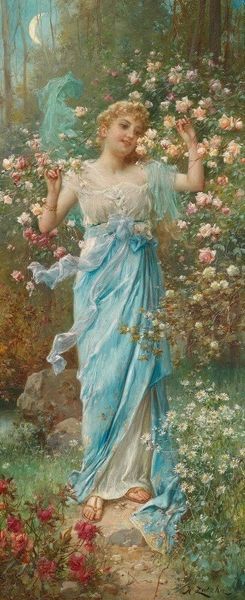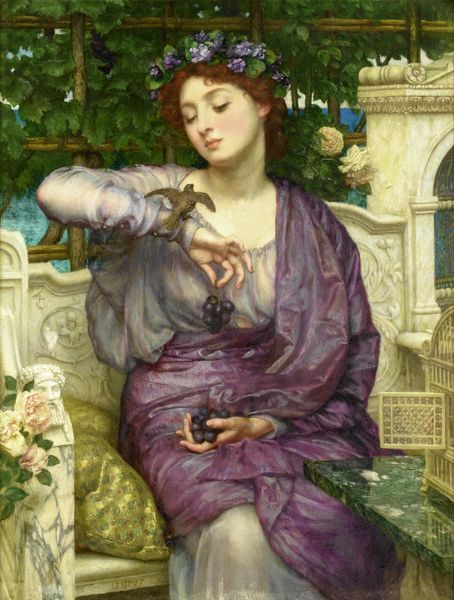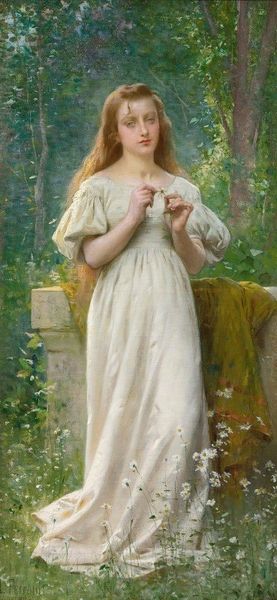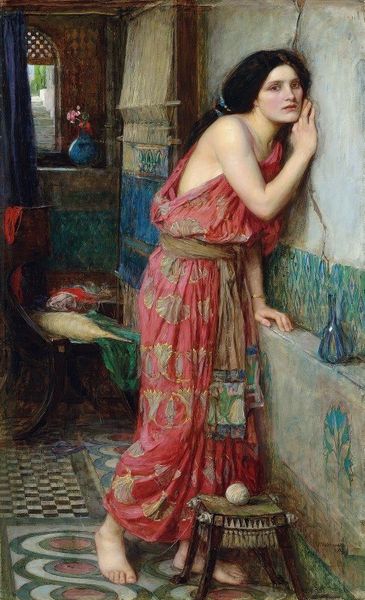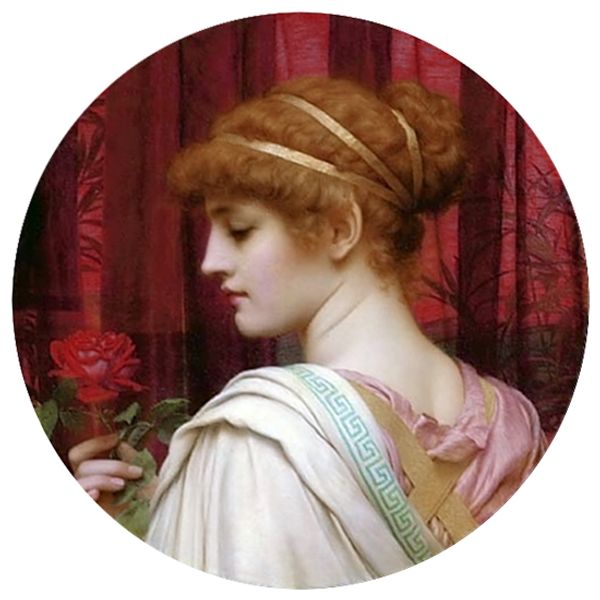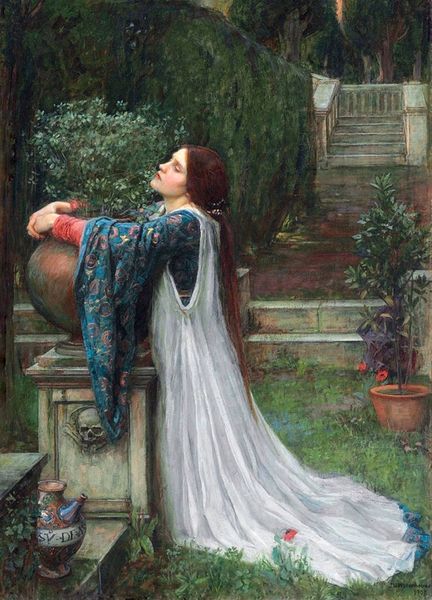
Copyright: Public Domain: Artvee
Editor: This is John William Waterhouse's "The Soul of the Rose" painted in 1908. It’s an oil painting depicting a woman smelling a rose in a garden. The overall effect is just so lush and romantic, almost dreamlike. What do you see in this piece? Curator: I see a powerful assertion of female subjectivity within a constricted patriarchal context. Waterhouse, often categorized as a Pre-Raphaelite, was working within a tradition that often objectified women, yet here we have a woman entirely absorbed in her own sensory experience. The roses aren’t offered to anyone, the pleasure isn’t performative. Editor: That’s a really interesting way to look at it. I hadn't considered the agency of the woman. Do you think the title also plays into that reading? Curator: Absolutely. “The Soul of the Rose” suggests that the woman is finding some kind of deep connection or perhaps even mirroring herself within the flower. The woman, the flower, the sensation—it's a network of female-centered experience that actively resists a male gaze. Editor: So, the Pre-Raphaelite aesthetic, which can sometimes feel passive, is actually subverted here? Curator: Precisely! Waterhouse is using the visual language of his time – the romanticism, the idealization of female beauty – but he's also injecting a subtle critique, a space for female interiority and autonomy. We must consider also what kind of agency could women have at the turn of the century, so the painting's radicalism has to be understood within that era. Editor: That's given me a completely different perspective. I initially saw it as just a pretty picture, but now I see so much more going on beneath the surface. Curator: And that’s the beauty of art, isn’t it? To keep asking questions, pushing against the dominant narrative, and revealing the complexities within.
Comments
No comments
Be the first to comment and join the conversation on the ultimate creative platform.

